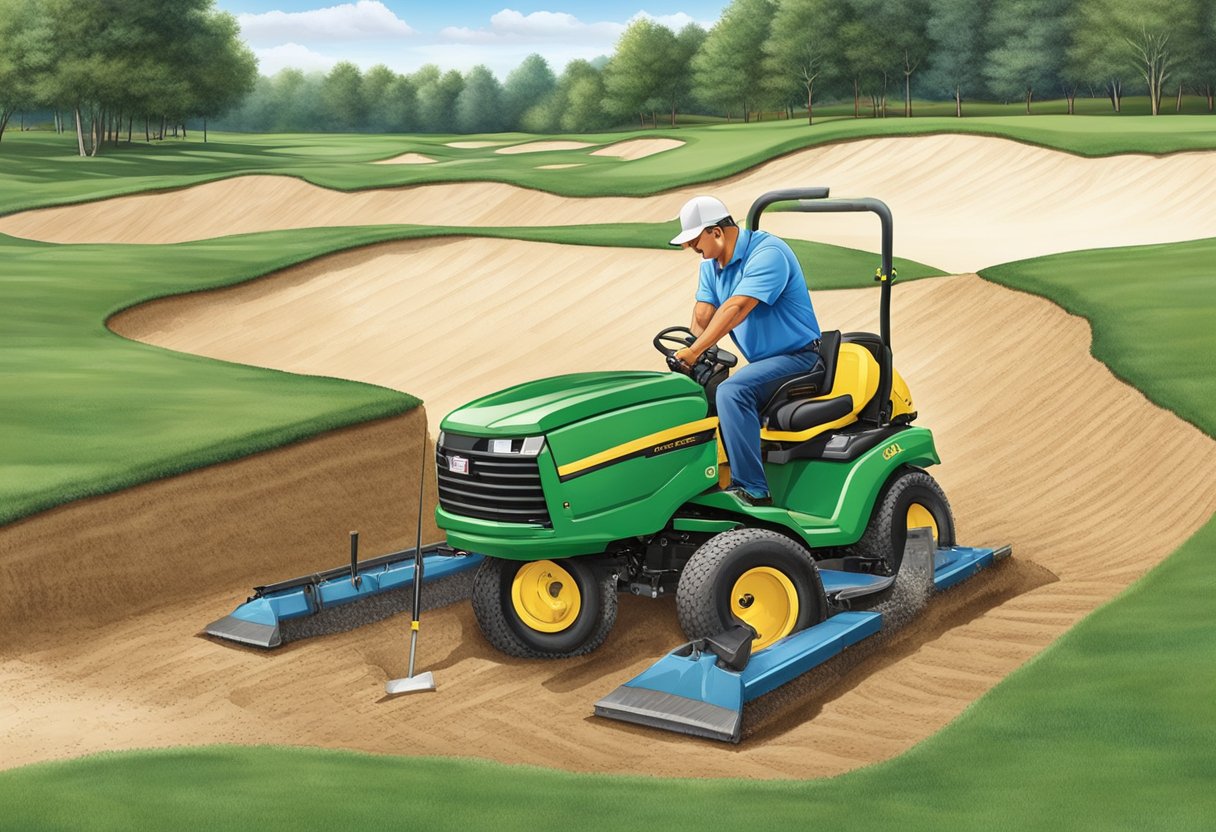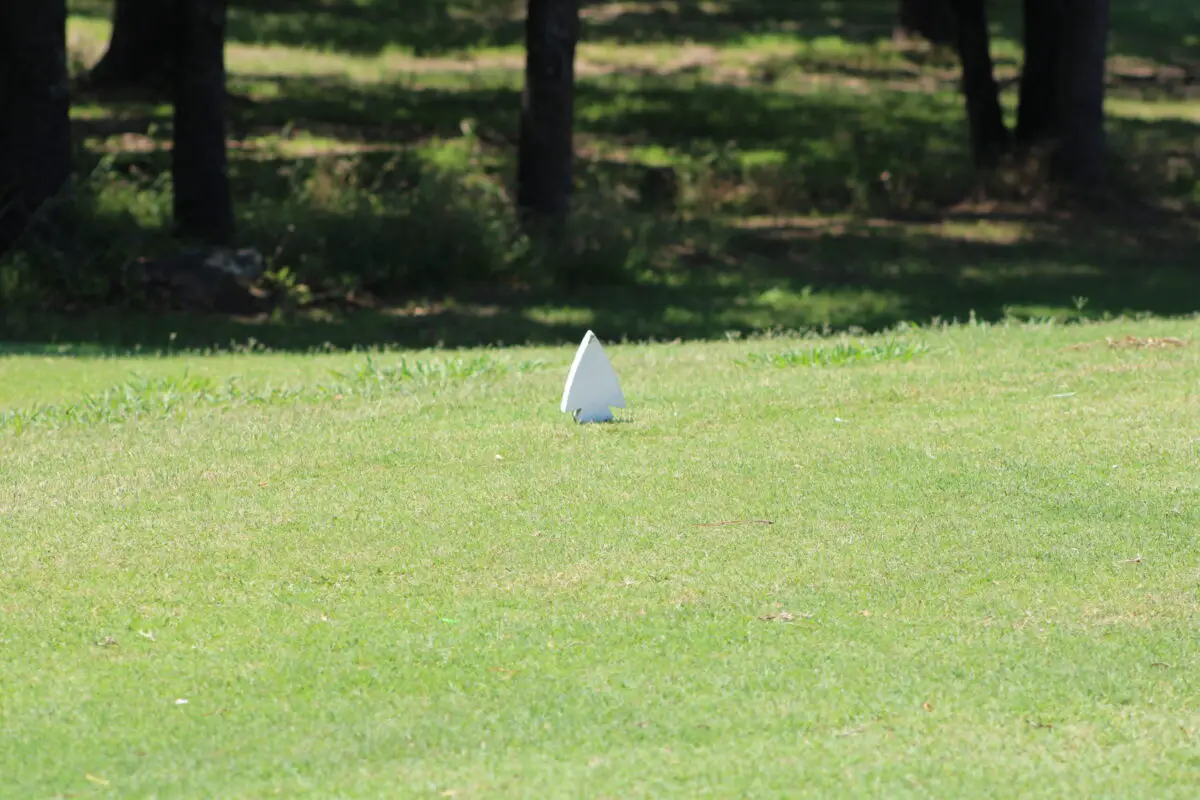Golf courses are designed to provide a challenging and enjoyable experience for players of all skill levels. Tee boxes, in particular, play a crucial role in the game of golf as they are where golfers begin their shots. One of the most debated topics among golfers is whether tee boxes should be level or not.

Some golfers argue that tee boxes should be perfectly level to ensure a fair and consistent game. They believe that uneven tee boxes can result in a player hitting a bad shot due to an unfavorable lie. On the other hand, others believe that tee boxes should have some slope to add to the challenge of the game. They argue that a perfectly level tee box can be too easy and take away from the game’s excitement.
The debate over whether tee boxes should be level or not has been ongoing for years, and there is no clear answer. However, understanding the pros and cons of both sides can help golfers make informed decisions when playing on different courses.
The Importance of Level Tee Boxes
Level tee boxes are an essential component of a golf course that can greatly affect the quality of a golfer’s game. Tee boxes are the starting point for every hole, and they should provide a level surface for golfers to hit their tee shots.
Having level tee boxes ensures that the golfer can hit the ball with a consistent trajectory and angle, which is necessary for a good golf shot. If the tee box is not level, it can cause the ball to be hit at an angle, leading to an inaccurate shot and a potential loss of distance.
Furthermore, uneven tee boxes can also affect the golfer’s stance and balance, making it difficult to execute a good shot. Golfers need to have a stable footing to hit the ball with the right amount of power and accuracy. If the tee box is not level, it can cause the golfer to lose balance or slip, leading to a poor shot.
In addition to affecting the golfer’s game, uneven tee boxes can also affect the overall aesthetics of the golf course. A poorly maintained tee box with uneven grass can make the course look unprofessional and uninviting. On the other hand, a well-maintained tee box with level grass can enhance the beauty of the course and make it more appealing to golfers.
Overall, level tee boxes are crucial for a golfer’s game and the overall appearance of the golf course. Golf course maintenance staff should ensure that the tee boxes are level and well-maintained to provide golfers with the best possible experience on the course.
Factors Affecting Tee Box Levelness

When it comes to golf, tee boxes are one of the most important aspects of the game. They are the starting point for each hole and can significantly affect a player’s performance. One of the most important factors that contribute to the quality of a tee box is its levelness. In this section, we will explore the various factors that can affect the levelness of tee boxes.
Soil Composition
The soil composition of a golf course can have a significant impact on the levelness of its tee boxes. If the soil is too soft or too hard, it can be difficult to maintain a level surface. For example, if the soil is too soft, the tee box can become uneven due to foot traffic or the weight of the golf cart. On the other hand, if the soil is too hard, it can be difficult to make adjustments to the tee box.
Weather Conditions
Weather conditions can also have an impact on the levelness of tee boxes. Rain, for example, can cause the soil to become soft and muddy, making it difficult to maintain a level surface. Similarly, extreme heat can cause the soil to become hard and dry, which can also make it difficult to maintain a level surface.
Maintenance Practices
Finally, maintenance practices can also play a role in the levelness of tee boxes. If tee boxes are not properly maintained, they can become uneven over time. For example, if the grass is not mowed regularly, it can become too long, which can make it difficult to maintain a level surface. Similarly, if the tee box is not properly watered, it can become too dry, which can also affect its levelness.
In conclusion, there are several factors that can affect the levelness of tee boxes, including soil composition, weather conditions, and maintenance practices. Golf courses must take these factors into account when designing and maintaining their tee boxes to ensure that they provide a level and fair playing surface for all golfers.
Impact of Uneven Tee Boxes on Golfers’ Performance

Golfers know that tee boxes are an important part of the game. They provide a starting point for each hole, and they can have a significant impact on a golfer’s performance. When tee boxes are uneven, it can create a challenging situation for golfers, especially those who have trouble hitting driver on uneven surfaces.
Uneven tee boxes can cause golfers to have difficulty finding a comfortable stance and proper balance, which can lead to inconsistent shots. Golfers may also have difficulty aligning their shots, which can cause them to miss their intended target. In addition, uneven tee boxes can cause golfers to hit the ball too high or too low, which can affect the distance and trajectory of their shots.
According to a post on The Sand Trap, most tee boxes on Tour courses are flat. However, on public courses, uneven tee boxes may be more common. While some golfers may see this as a challenge, others may find it unfair, especially if the unevenness is not intended.
To ensure that tee boxes are level, golf course maintenance workers can use one of three simple methods for leveling tees, as suggested by the USGA. These methods include using a laser level, a transit level, or a string line. By using these methods, golf course maintenance workers can ensure that tee boxes are level, which can provide a fair and consistent playing surface for golfers of all skill levels.
In conclusion, uneven tee boxes can have a significant impact on a golfer’s performance. They can cause golfers to have difficulty finding a comfortable stance and proper balance, as well as difficulty aligning their shots and hitting the ball to the intended target. Golf course maintenance workers can ensure that tee boxes are level by using one of the three simple methods suggested by the USGA. By doing so, they can provide a fair and consistent playing surface for golfers of all skill levels.
Methods to Level Tee Boxes

When it comes to leveling tee boxes, there are two main methods: manual leveling and using leveling equipment.
Manual Leveling
Manual leveling involves using hand tools to level the tee box. This method is often used for smaller tee boxes or for touch-up work after using leveling equipment. Here are the steps for manual leveling:
- Remove any turf or grass from the tee box surface.
- Use a shovel or spade to remove any high spots or bumps in the ground.
- Use a rake to smooth out the surface and create a level area.
- Repeat steps 2 and 3 until the surface is level.
While manual leveling can be effective, it is time-consuming and requires a skilled operator to ensure a level surface.
Using Leveling Equipment
Using leveling equipment is the most common method for leveling tee boxes. This method involves using specialized equipment to remove high spots and create a level surface. Here are the steps for using leveling equipment:
- Remove any turf or grass from the tee box surface.
- Use a tractor-mounted box blade, skid steer, or similar equipment to remove high spots and create a level surface.
- Use a laser or other measuring tool to ensure the surface is level.
- Replace the turf or grass on the surface.
Using leveling equipment is faster and more efficient than manual leveling, but it requires specialized equipment and a skilled operator. It is also important to note that tee boxes should not be perfectly level. According to a golf architect, they should have some slope, usually around 1-4%, to help drain water.
Cost Implications of Leveling Tee Boxes
When it comes to leveling tee boxes, one of the first considerations is the cost. According to BrightView, tee box renovation costs can range from $1.50 per square foot for warm season turf to $2.50 per square foot for cool season turf. This means that for a tee box that measures 5,000 square feet, the cost of leveling could range from $7,500 to $12,500.
Additionally, the timing of the renovation should be considered. Count on about three weeks from start to finish: five days of work for every 10,000 square feet undergoing renovation and two or more weeks after the work has been done for the tee to be playable.
However, it is important to note that the cost of not leveling tee boxes could be even higher. Uneven tee boxes can lead to inconsistent ball lies, which can negatively impact golfers’ shots and their overall experience on the course. This could lead to lower satisfaction and fewer rounds played, ultimately affecting revenue for the course.
While leveling tee boxes may come with a cost, it is an investment in the course’s overall quality and the satisfaction of its golfers.
- Should Tee Boxes Be Level? - January 23, 2024
- 3 Hybrid Distance - November 15, 2023
- Innovations in Golf Mobility: An In-depth Review of Top Golf Scooters - October 12, 2023
